Source: The Conversation (Au and NZ) – By Jacob C. Blokland, Vertebrate Palaeontology PhD Candidate and Casual Academic, Flinders University
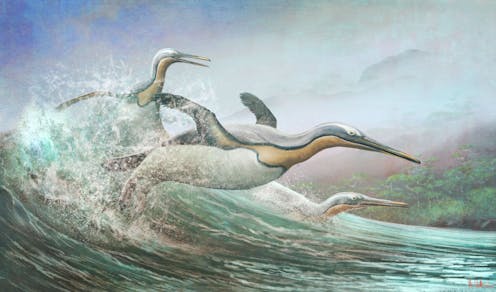
What is the largest penguin that ever lived? – Casey, age 6, Perth
Hi Casey, thanks for this great question!
Today the largest living penguin is the emperor penguin, which lives in Antarctica and is about one metre tall. The appropriately named little penguin is the smallest, standing only about as high as a ruler.
But penguins have swum in Earth’s oceans for more than 62 million years – and they were not always these sizes. Long before humans walked the Earth, some penguins would have stood as tall as a grown-up person.
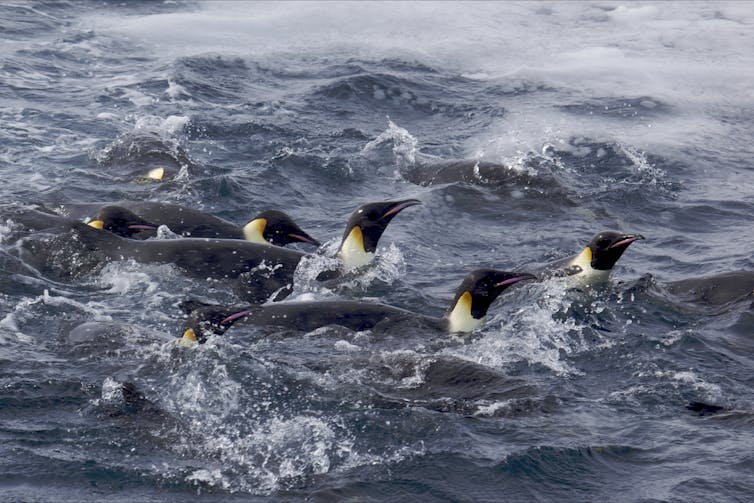
Ian Duffy/Flickr, CC BY-NC
Diving in
To understand how penguins once got so big, we need to go back to the very first ones.
The closest relatives of penguins today can actually fly through the air. These include petrels and the soaring albatrosses.
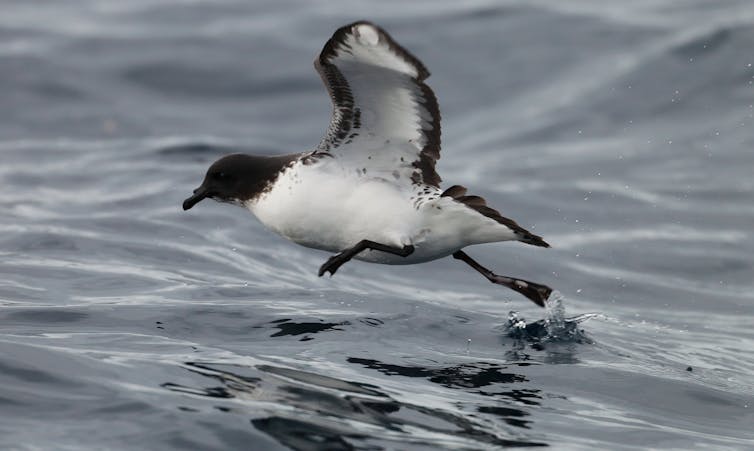
Ed Dunens/Flickr, CC BY-NC
While waddling penguins might seem quite different to these seabirds, they’re quite alike in a number of ways. They share similarities in their skeletons, and both share distant relatives (great, great grandparents going back millions of years) that flew in the air.
Penguins can’t fly in the air anymore. Instead, they “fly” through the water — and doing both well isn’t an option.
For birds, water is a lot harder to fly through than air. But penguins have certain qualities that allow them to do this.
The wings of penguins are flippers. These are great for moving underwater, but not very helpful for flying above it. Their heavy bodies help them dive further and deeper so they can hunt for food. But being heavier makes flying in the air difficult.
Read more:
Curious Kids: do penguins fly underwater?
While penguins’ distant relatives were small seabirds, over many years they gave up flight to become professional swimmers. The bigger they were, and the stronger their bones, the better they could dive.
Because penguins have heavier and stronger bones than air-flying birds, this means their bones are less likely to break. It also means we are more likely to find them as fossils (what’s left behind from ancient life) long after they die.
In fact, the bones of one kind of giant penguin (Kairuku waewaeroa) were discovered by school children.
Room to grow
The asteroid that wiped out the dinosaurs (except birds!) 66 million years ago gave the distant relatives of penguins the perfect chance to go swimming.
Many of the animals that would have eaten them in the sea were gone, which meant they could go underwater without worrying about being eaten.
The oldest penguin bones we have belonged to birds that lived only a few million years after the asteroid hit, and come from Aotearoa, or New Zealand. These are similar to the bones of today’s penguins, so we think penguins probably stopped flying in the air some time soon after the asteroid event.
Some of these first penguins were enormous. One was the gigantic Kumimanu biceae, which was probably 1.7 metres tall (the same size as many human adults).
Kumimanu may have been one of the largest penguins ever. It probably weighed 100kg, whereas the emperor penguin weighs less than half of that.
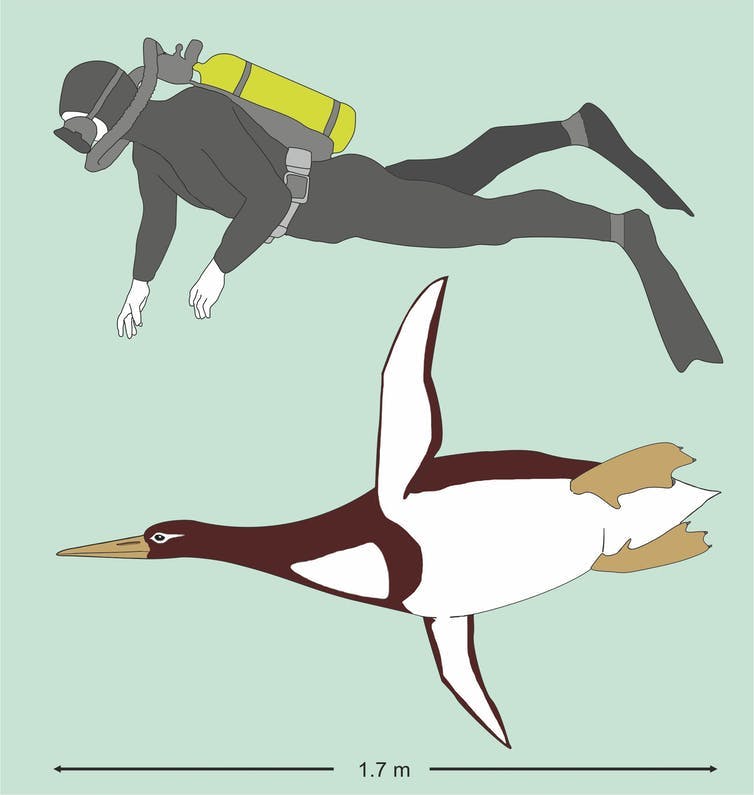
G Mayr/Senckenberg Research Institute, CC BY-ND
While many giant penguins lived in the millions of years after Kumimanu, the only penguin that may have been larger was the huge Palaeeudyptes klekowskii, which swam off the coast of Antarctica more than 34 million years ago. This penguin may have been two metres tall and weighed 115kg!.
As for what happened to giant penguins, they vanished about 15 million years ago and no one really knows why. There are still many questions, but with more fossil discoveries, we might find some answers!
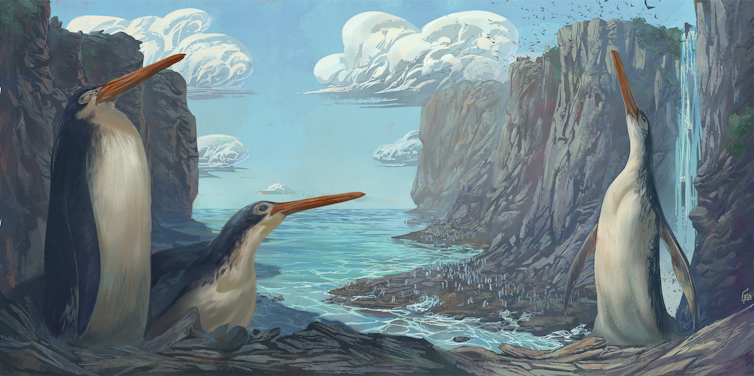
Simone Giovanardi (used with permission), CC BY-NC
![]()
Jacob C. Blokland receives funding from The Australian Government Research Training Program Scholarship.
– ref. Curious Kids: what is the largest penguin that ever lived? – https://theconversation.com/curious-kids-what-is-the-largest-penguin-that-ever-lived-178036







